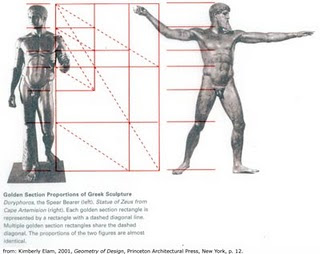My new poem is in the seventh issue of the journal which can be accessed on-line at http://www.musepiepress.com/fibreview/wolfiewolfgang1.html – if you want to read more of my Fib poems, and many of the others by other Fib poets, I am also in the fifth and sixth issues.
Some of you may wonder what this has this to do with my laughable lack of arithmetic skill but these poems are all based on what is known as the Fibonacci Sequence which is, yes you guessed, a number sequence where one number fits into a pattern by being the sum of the previous two. In one of those dusty classrooms of my childhood, I would now be gazing out of the window watching crows mating on a chimney or a spider sucking the life out of a fly but stick with me because there is something in this number sequence thing.
First the numbers:
0, 1, 1, 2, 3, 5, 8, 13, 21, 34, 55, 89, 144, 233, 377, 610, 987, 1597, 2584 …..
Am I boring you already? Sorry I’ll stop here but they go on like this forever in that mildly frightening way that numbers do in their own version of eternity.
If a poet uses the sequence to count out the syllables in each line of his poem then the end product is a sequence, a Fibonacci sequence and I just love writing them. Maybe, one day, I will do one for Sparky. Here’s a quick example, forgive me, that I just rushed off as I was writing this blog:
Writing Fibonacci poetry is a wonderful mix of art and fun and I am a long way from getting tired of the seemingly endless possibilities of running these sequences. If you are interested in the variations possible within such a strict system just look at the work of the different writers represented in The Fib Review.
Fibonacci was, of course, much cleverer than me – even Sparky would have been in awe of him. He was born, Leonardo that is, in around 1170 as an Italian boy in Algiers where he first saw how much easier Arabic numerals were to use than those silly Roman ones where everything is a mix of different letters of the alphabet. He wrote it all down in a book called the Liber Abaci (The Book of Abacus) and, single-handedly, changed the way Europe wrote down its numbers.
It was whilst he was studying Arabic numerals that he also read about the wierdly almost preordained relationship between those numbers which would forever take his name, the Fibonacci Sequence.
Now know how boring maths classes can be, believe me, but there is something about these numbers that even I can enjoy.
Someone clever like Sparky worked out that if you divided any of these numbers by the one next in line in the sequence, something truly strange happens once you get to around the thirteenth number. 144 divided by 233 equals 0.618. Wow!!!!!
Now you think I have gone mad but stick with this. all the numbers after that, when divided by the next one add up to the same result – 0.618 and that number, my friends is highly significant.
The spider had dessicated that fly and had moved on to a wasp when we got round to ratios in my maths class so forgive my rudimentary knowledge here but a shape that has two measurements of the ratio 1 to 1.618 or 1 to 0.618 is known as The Golden Mean and, so we are told, we all love things to look like that – as with the Fibonacci Sequence there is something about its symetry that appeals to us all, be it human bodies…
……Leonardo Da Vinci paintings……
………or great public buildings……
…..Greek sculpture…….
…or Nature herself………
…and even in George Clooney…….
No wonder they erected a statue to Leonardo Fibonacci.
So I offer my thanks to Leonardo Fibonacci, the editor of The Fib Review and, of course, to Sparky for all their help and guidance on this unpredictable route from horror at maths to joy in its poetry.
The possibilities of the Fibonacci sequence has opened my eyes to all sorts of things maybe, even, the other school subject where I more than failed at – woodwork. Now that I have discovered Leonardo Fibonacci, who knows, I might even get to make my own writing desk using the truly wonderful Fibonacci Gauge but I might have to master sawing wood first because I could never cut it straight:
Maybe that is enough Fibonacci for one day but if not, take a look at this…..and don’t try it on the bus:











If you want real mathematical beauty, look at Eulers Identity. If you're not blown away by it, you've not understood it. It is unbelievable.
Well Anonymous, I had better take a look at Eulers Identity then but i am nervous now about not understanding it! When you say "if you want real mathematical beauty.." do you mean that the Fibonacci Sequence doesn't have real beauty? I am certainly no mathematician.
Hmmm, the Fib Seq is certainly applicable to beauty (sunflowers, snails shells, etc.), and it is aesthetically pleasing, but with regards to 'mathematical beauty', I would say probably not.
I can see, well I guess I knew it anyway, that i have a lot to learn about mathematics….aesthetically pleasing is great for sure but I love the idea of mathematical beauty. i will investigate Eulers Identity. Thanks for this.
Talking of beauty: you are using a serif font a lot of the time. Please can you revert to a nice clean Arial or Verdana
The You-tube clip was interesting, but not as good as the woman in 'Twin Peaks'.
There is no pleasing some folk Claudio but you are right…it is teething problems with the new iMac computer.
Very cool blog on the Fibonacci Number Sequence Wolfie. I bought a kid's book that is great – Blockhead – The Life of Fibonacci, written by Joesph D'Agnese. You should add it to your library.
Thanks again for your wonderful contributions to The Fib Review. — MJ
Pleased you liked the blog Sunnie – i hoped that you would! I shall dig for that book.